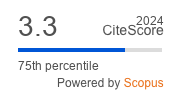Article | Open Access
The Prolonged Inclusion of Roma Groups in Swedish Society
| Views: | 4688 | | | Downloads: | 2568 |
Abstract: Inclusion policies focusing on Roma groups started in Sweden during the 1950s, when the Swedish government recognized the formal citizen status of the so called “Swedish Gypsies”, a group consisting of approximately 740 people. As the Roma were perceived as people living outside the boundaries of normal society, the challenge facing the Swedish authorities was how to outline and organize the new policies. In our analyses we focus on the taken-for-granted premises of these policies. We discuss the “entry process” of these Roma into Swedish society. People-processing organizations classified Roma as “socially disabled” in different administrative contexts. In the early 1960s adult male Roma were classified as socially disabled on the labor market. Later during the same decade, experts and professionals increasingly focused attention on the Roma family as a problematic institution. In this context, Roma adults were classified as disabled in relation to the normative representations of parental capacities during that time, while Roma children of school age were defined as children with difficulties and put in special groups for children with problems. The related interventions were justified by a discourse on social inclusion, but in reality produced a web of measures, practices and yet further interventions, which in the long run have contributed to perpetuate the social marginality of Roma groups.
Keywords: Gypsy; Roma; social disability; social inclusion; Sweden
Published:
© Norma Montesino and Ida Ohlsson Al Fakir. This is an open access article distributed under the terms of the Creative Commons Attribution 4.0 license (http://creativecommons.org/licenses/by/4.0), which permits any use, distribution, and reproduction of the work without further permission provided the original author(s) and source are credited.


